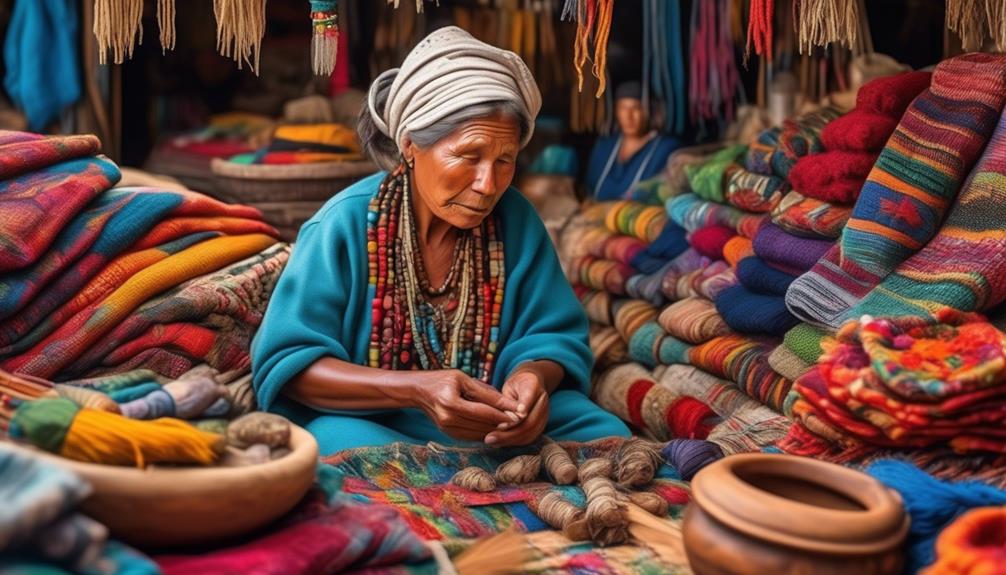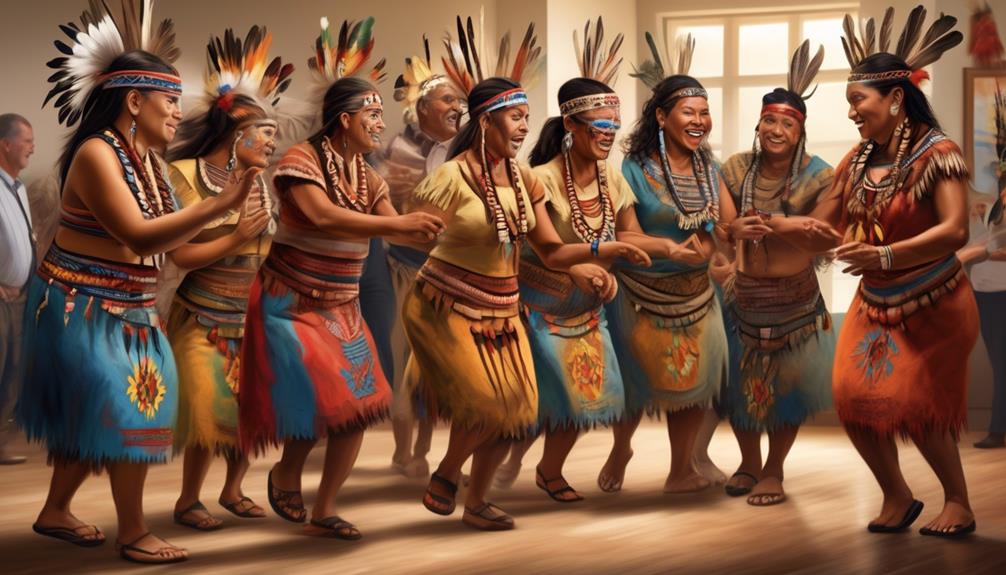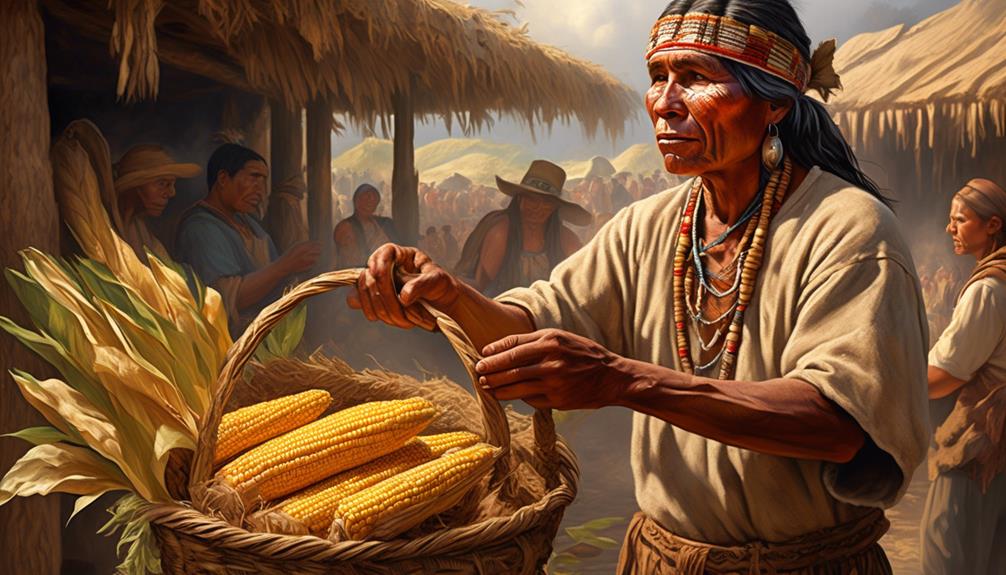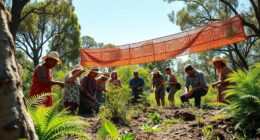In order to adequately address the needs of native populations, it is crucial to acknowledge the past and present injustices they experience. It is our duty as a society to actively work towards rectifying these injustices and offering genuine support to indigenous communities.
However, simply acknowledging the challenges is not enough; we must also take tangible actions to show our support. In the following discussion, we will explore concrete steps that individuals and organizations can take to uplift and empower indigenous communities, creating a more equitable and inclusive future for all.
Key Takeaways
- Understand and respect Indigenous sovereignty and land rights to support Indigenous communities in protecting and managing their traditional territories.
- Amplify Indigenous voices by engaging with and sharing Indigenous media outlets, promoting Indigenous leaders, creating inclusive spaces, and supporting Indigenous art and culture.
- Support Indigenous-owned businesses to contribute to the preservation of cultural heritage, economic empowerment and self-sufficiency, community development and well-being, sustainable practices, and strengthening of Indigenous identity and pride.
- Engage in cultural education by participating in cultural exchange programs, supporting language revitalization efforts, learning from Indigenous elders and knowledge keepers, and exploring Indigenous arts and literature.
- Participate in advocacy efforts by advocating for Indigenous rights, engaging in political processes, organizing educational events, fundraising for Indigenous causes, and grassroots organizing to drive change.
Understanding Indigenous Rights
Understanding Indigenous rights is crucial for creating a more just and equitable society.
Indigenous sovereignty and land rights are fundamental aspects of these rights. Indigenous sovereignty refers to the inherent authority of Indigenous nations to govern themselves and make decisions about their lands, resources, and communities. It's important to recognize and respect the autonomy and self-determination of Indigenous peoples in matters that affect their lives and well-being.
Land rights are also central to Indigenous rights, as land isn't just property but a vital part of Indigenous identity, culture, and spirituality. Upholding Indigenous land rights means acknowledging historical injustices, honoring treaties, and supporting Indigenous communities in their efforts to protect and manage their traditional territories.
Amplifying Indigenous Voices
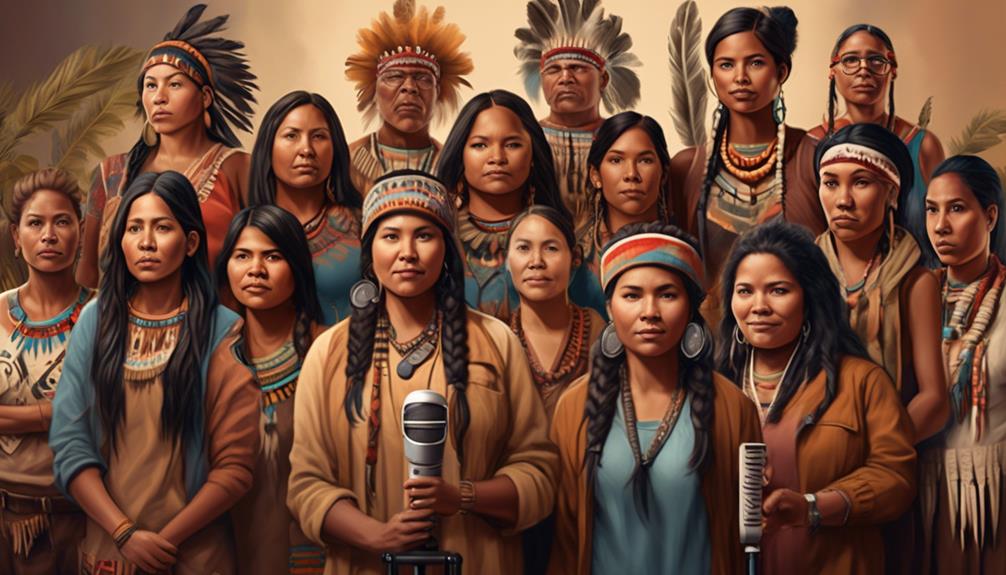
Frequently, we must actively seek out and promote the voices of Indigenous communities to ensure their perspectives are heard and valued. Elevating representation and promoting inclusion are crucial steps in amplifying Indigenous voices.
Here's how we can achieve this:
- Supporting Indigenous Media: By engaging with and sharing Indigenous media outlets, we can help amplify Indigenous voices and stories, providing them with a platform to reach a wider audience.
- Promoting Indigenous Leaders: Recognizing and uplifting Indigenous leaders in various fields, such as politics, education, and the arts, can help bring attention to their perspectives and experiences.
- Creating Inclusive Spaces: Actively working to create inclusive spaces where Indigenous voices aren't only heard but also actively welcomed and respected is essential for promoting their representation.
- Amplifying Indigenous Art and Culture: Supporting and showcasing Indigenous art, music, and cultural events can help promote the inclusion of Indigenous perspectives, fostering a deeper understanding and appreciation for their heritage.
Supporting Indigenous-Owned Businesses
To further advance our support for Indigenous communities, let's now focus on the vital role of supporting Indigenous-owned businesses. Indigenous entrepreneurship plays a crucial role in economic empowerment within Indigenous communities. By actively supporting Indigenous-owned businesses, we can contribute to the preservation of traditional knowledge, culture, and art, while also fostering economic development and self-sufficiency.
| Benefits of Supporting Indigenous-Owned Businesses |
|---|
| 1. Preservation of Cultural Heritage |
| 2. Economic Empowerment and Self-Sufficiency |
| 3. Community Development and Well-being |
| 4. Sustainable Practices and Environmental Stewardship |
| 5. Strengthening of Indigenous Identity and Pride |
Supporting Indigenous-owned businesses not only provides economic opportunities but also helps in preserving and promoting Indigenous culture and traditions. It is a way to honor and respect the resilience and creativity of Indigenous entrepreneurs. By consciously choosing to support these businesses, we actively contribute to the economic empowerment and well-being of Indigenous communities. This deliberate action fosters a sense of pride and identity, ultimately leading to a more inclusive and prosperous society.
Engaging in Cultural Education
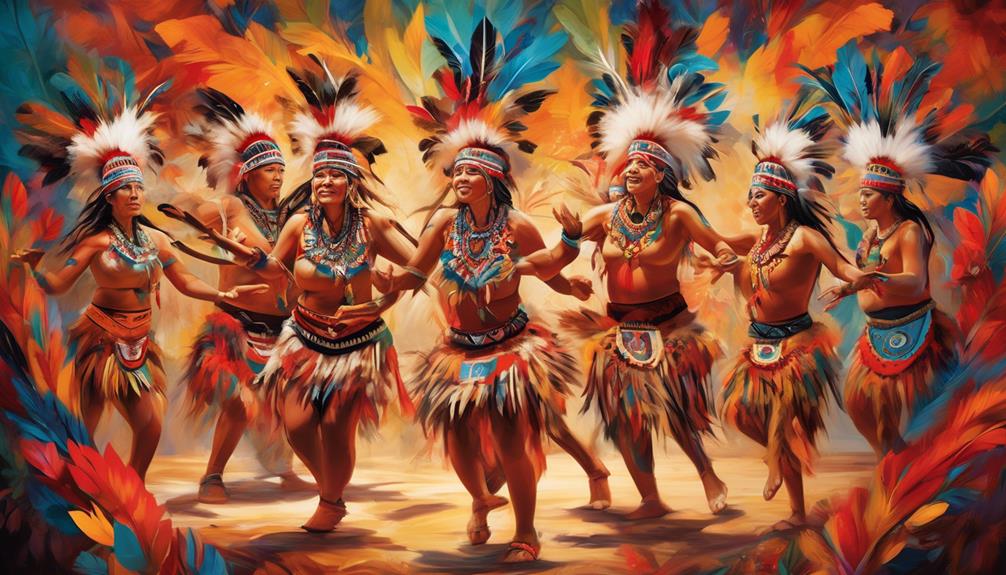
Engaging in ongoing cultural education allows us to deepen our understanding of Indigenous traditions and histories, fostering greater respect and appreciation for their rich heritage. This is a crucial step towards building meaningful and mutually beneficial relationships with Indigenous communities.
To actively engage in cultural education, we can:
- Participate in Cultural Exchange Programs: Actively seek out opportunities to engage in cultural exchange programs, workshops, and events organized by Indigenous communities. These experiences provide firsthand knowledge and foster mutual respect and understanding.
- Support Language Revitalization Efforts: Many Indigenous languages are at risk of disappearing. Supporting language revitalization efforts, such as attending language classes or using language learning resources, can contribute to the preservation of Indigenous cultures.
- Learn from Indigenous Elders and Knowledge Keepers: Engage with Indigenous elders and knowledge keepers to learn directly from those who hold traditional knowledge and wisdom. This direct interaction can provide valuable insights into Indigenous worldviews and cultural practices.
- Explore Indigenous Arts and Literature: Delve into Indigenous arts, literature, and media to gain a deeper understanding of Indigenous perspectives, experiences, and creativity.
Participating in Advocacy Efforts
Participating actively in advocacy efforts amplifies our support for Indigenous communities and promotes awareness of their rights and needs. Political engagement is crucial in advocating for Indigenous rights at local, national, and international levels. Engaging with policymakers, attending town hall meetings, and supporting Indigenous leaders in their political endeavors can drive legislative reform and ensure that Indigenous voices are heard in decision-making processes.
Community outreach is equally vital, involving activities such as organizing educational events, fundraising for Indigenous causes, and collaborating with Indigenous organizations. Grassroots organizing empowers individuals to mobilize support, raise awareness, and advocate for change from the ground up.
Frequently Asked Questions
How Can I Ensure That My Support of Indigenous Communities Is Respectful and Culturally Appropriate?
To ensure our support of Indigenous communities is respectful and culturally appropriate, we prioritize:
- Respectful engagement and cultural sensitivity. This involves actively listening to the needs and desires of the community, seeking guidance from Indigenous leaders and elders, and educating ourselves on their cultures and traditions.
What Are Some Common Misconceptions About Indigenous Rights That I Should Be Aware Of?
Misunderstanding of Indigenous rights often stems from cultural insensitivity. It's easy to overlook the impact of colonization on land rights.
Many people assume Indigenous rights are just about casinos and tax breaks, but it's much deeper than that. Understanding these misconceptions is crucial to truly supporting Indigenous communities.
Are There Specific Ways to Engage in Advocacy Efforts That Are Most Effective for Supporting Indigenous Communities?
Engaging in effective advocacy for supporting Indigenous communities involves:
- Cultural engagement and empowering representation.
- Prioritizing responsible allyship and listening to the voices of Indigenous leaders.
What Are Some Important Considerations for Amplifying Indigenous Voices in a Way That Is Empowering and Not Tokenizing?
Amplifying indigenous voices involves empowerment, representation, cultural sensitivity, and respectful engagement. It's crucial to uplift these voices without tokenizing or diminishing their significance.
We aim to support indigenous communities by amplifying their perspectives in an empowering and respectful manner. This requires active listening, centering their narratives, and acknowledging the historical and ongoing injustices they face.
How Can I Be a Better Ally to Indigenous-Owned Businesses Without Appropriating Their Culture or Exploiting Their Resources?
Responsible consumerism involves supporting indigenous-owned businesses while respecting their culture and resources.
We prioritize cultural sensitivity by learning about the traditions and values of the communities we aim to support.
We recognize the importance of fair compensation, ethical sourcing, and collaboration based on mutual respect.
Conclusion
As we continue to learn and grow, let's remember the words of Chief Seattle: 'We don't inherit the earth from our ancestors, we borrow it from our children.'
By supporting indigenous communities, we honor their wisdom, resilience, and connection to the land. Together, we can amplify their voices, advocate for their rights, and contribute to a brighter future for all.
Let's stand in solidarity and walk the path of justice and reconciliation.


